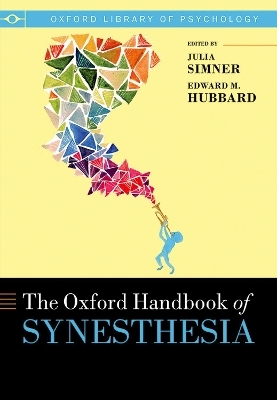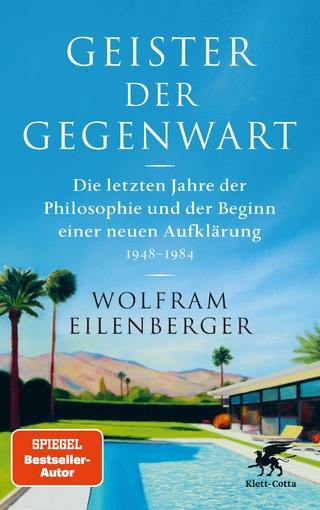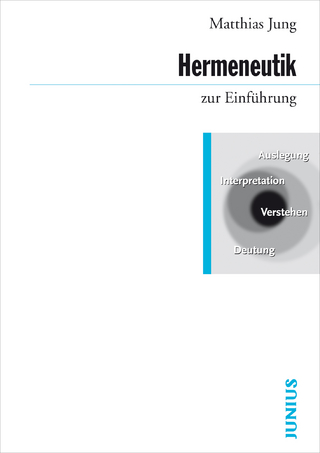
The Oxford Handbook of Synesthesia
Oxford University Press (Verlag)
978-0-19-883627-8 (ISBN)
Synesthesia is a fascinating phenomenon which has captured the imagination of scientists and artists alike. This inherited condition gives rise to a kind of 'merging of the senses', and so for those who experience it, everyday activities like reading or listening to music trigger extraordinary impressions of colours, tastes, smells, shapes and other sensations. Synesthesia research also informs us about normal sensation because all people experience cross-sensory mappings to an implicit degree. Synesthesia has a considerably broad appeal, and in recent decades the field has experienced a resurgence of interest. These advances have painted a detailed story about the development, genetics, psychology, history, aesthetics and neuroscience of synesthesia, and provide a contemporary source of study for a new generation of scholars.
The Oxford Handbook of Synesthesia brings together this broad body of knowledge into one definitive state-of-the-art handbook. It includes a large number of concisely written chapters, under broader headings, which tackle questions about the origins of synesthesia, its neurological basis, its links with language and numbers, attention and perception, and with 'normal' sensory and linguistic processing. It asks questions about synesthesia's role in language evolution, and presents both contemporary and historical overviews of the field. It shows synaesthesia's costs and benefits (e.g., in creativity, memory, imagery) and describes how synaesthesia can provide inspiration for artists and designers. The book ends with a series of perspectives on synesthesia, including a first-hand account, and philosophical viewpoints which show how synaesthesia poses unique questions about sensation, consciousness and the nature of reality.
Dr. Julia Simner is an experimental neuropsychologist and leading expert in the field of synaesthesia research. She has a background in psychology, languages and linguistics from the Universities of Oxford, Toronto and Sussex, and she currently runs the Synaesthesia and Sensory Integration lab at the University of Edinburgh, Scotland. Her work focusses on the sensory, cognitive, linguistic, developmental, and historical bases of synaesthesia, and has been published in high impact science journals such as Nature, Trends in Cognitive Science and Brain. She is keenly interested in facilitating the public's understanding of science and her work has been reported in over 100 media articles world-wide, including the NY Times, BBC, CBC, Telegraph, Times, New Scientist, Scientific American etc. In 2010 she was recognised as an outstanding European scientist by the European Commission's Atomium Culture Initiative and her science writing has been published in some of Europe's leading national newspapers. Dr. Edward M. Hubbard is an Assistant Professor in the Department of Educational Psychology at the University of Wisconsin-Madison where he directs the Educational Neuroscience Laboratory. He received degrees from UC Berkeley and UC San Diego and completed his post-doctoral training at INSERM's Cognitive Neuroimaging Unit and Vanderbilt University. He has investigated the perceptual and neural bases of grapheme-color synesthesia and synesthetic number forms for nearly twenty years, and his behavioural and neuroimaging work was critical in convincing the scientific community that synaesthesia was a valid, tractable topic for investigation. More recently, he has begun to investigate the neural basis of numerical and mathematical processing in non-synesthetes, and the development of these abilities in children, to better understand the neural mechanisms that lead to the development of synesthesia in children.
Part 1: Origins of Synesthesia
1: Donielle Johnson, Carrie Allison, and Simon Baron-Cohen: The prevalence of synesthesia: The consistency revolution
2: Julian E. Asher and Duncan A. Carmichael: The genetics and inheritance of synaesthesia
3: Daphne Maurer, Laura C. Gibson, and Ferrinne Spector: Synesthesia in infants and very young children
4: Julia Simner and Edward M. Hubbard: Synesthesia in school-aged children
5: Peter Hancock: Synesthesia, alphabet books, and fridge magnets
Part 2: Synesthesia, Language, and Numbers
6: Roi Cohen Kadosh and Avishai Henik: Numbers, synesthesia, and directionality
7: Clare Jonas and Michelle Jarick: Synesthesia, sequences, and space
8: Julia Simner: The 'rules' of synesthesia
9: Aleksandra Mroczko-Wasowicz and Danko Nikolic: Colored alphabets in bilingual synesthetes
10: Fiona N. Newell: Synesthesia, meaning, and multilingual speakers
11: Wan-Yu Hung: Synesthesia in non-alphabetic languages
12: Monika Sobczak-Edmans and Noam Sagiv: Synesthetic personification: The social world of graphemes
Part 3: Attention and Perception
13: Tessa M. van Leeuwen: Individual differences in synesthesia
14: Anina N. Rich and Jason B. Mattingley: The role of attention in synesthesia
15: Chai-Youn Kim and Randolph Blake: Revisiting the perceptual reality of synesthetic color
16: Bryan D. Alvarez and Lynn C. Robertson: Synesthesia and binding
17: Tanja C. W. Nijboer and Bruno Laeng: Synesthesia, eye-movements, and pupillometry
18: Alicia Callejas and Juan Lupi áñ ez: Synesthesia, incongruence, and emotionality
Part 4: Contemporary and Historical Approaches
19: Jörg Jewanski: Synesthesia in the nineteenth century: Scientific origins
20: Richard E. Cytowic: Synesthesia in the twentieth century: Synesthesia's renaissance
21: Christopher T. Lovelace: Synesthesia in the twenty-first century: Synesthesia's ascent
22: Christine Mohr: Synesthesia in space versus the 'mind's eye': How to ask the right questions
23: Markus Zedler and Marie Rehme: Synesthesia: A psychosocial approach
Part 5: Neurological Basis of Synesthesia
24: Edward M. Hubbard: Synesthesia and functional imaging
25: Romke Rouw: Synesthesia, hyperconnectivity, and diffusion tensor imaging
26: Peter H. Weiss: Can gray matter studies inform theories of (grapheme-color) synesthesia?
27: Kevin J. Mitchell: Synesthesia and cortical connectivity: A neurodevelopmental perspective
28: Lutz Jäncke: The timing of neurophysiological events in synaesthesia
29: Neil G. Muggleton and Elias Tsakanikos: The use of transcranial magnetic stimulation in the investigation of synesthesia
30: Michael J. Banissy: Synesthesia, mirror neurons, and mirror-touch
Part 6: Costs and Benefits: Creativity, Memory, and Imagery
31: Catherine M. Mulvenna: Synesthesia and creativity
32: Cretien van Campen: Synesthesia in the visual arts
33: Patricia Lynne Duffy: Synesthesia in literature
34: Carol Steen and Greta Berman: Synesthesia and the artistic process
35: Beat Meier and Nicolas Rothen: Synesthesia and memory
36: Mary Jane Spiller and Ashok S. Jansari: Synesthesia and savantism
37: Mark C. Price: Synesthesia, imagery, and performance
Part 7: Cross-Modality in the General Population
38: Lawrence E. Marks: Weak synesthesia in perception and language
39: Cesare Parise and Charles Spence: Audiovisual cross-modal correspondences in the general population
40: Argiro Vatakis: Cross-modality in speech processing
41: Vincent E. Walsh: Magnitudes, metaphors, and modalities: A theory of magnitude revisited
42: Laurent Renier and Anne G. De Volder: Sensory substitution devices: Creating 'artificial synesthesias'
43: Christine Cuskley and Simon Kirby: Synesthesia, cross-modality, and language evolution
Part 8: Perspectives on Synesthesia
44: Sean A. Day: Synesthesia: A first-person perspective
45: Noam Sagiv and Chris D. Frith: Synesthesia and consciousness
46: Brian L. Keeley: What exactly is a sense?
47: Mary-Ellen Lynall and Colin Blakemore: What synesthesia isn't
48: V. S. Ramachandran and David Brang: From molecules to metaphor: Outlooks on synesthesia research
49: Jamie Ward: Synesthesia: Where have we been? Where are we going?
| Erscheinungsdatum | 27.12.2018 |
|---|---|
| Verlagsort | Oxford |
| Sprache | englisch |
| Maße | 167 x 246 mm |
| Gewicht | 1974 g |
| Themenwelt | Geisteswissenschaften ► Philosophie ► Allgemeines / Lexika |
| Geisteswissenschaften ► Psychologie ► Allgemeine Psychologie | |
| Geisteswissenschaften ► Psychologie ► Verhaltenstherapie | |
| Naturwissenschaften ► Biologie ► Humanbiologie | |
| Naturwissenschaften ► Biologie ► Zoologie | |
| ISBN-10 | 0-19-883627-9 / 0198836279 |
| ISBN-13 | 978-0-19-883627-8 / 9780198836278 |
| Zustand | Neuware |
| Informationen gemäß Produktsicherheitsverordnung (GPSR) | |
| Haben Sie eine Frage zum Produkt? |
aus dem Bereich


